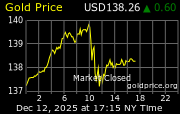
After the previous week’s dramatic fall, open interest rose marginally last week, by 1.4 tonnes. As of last Friday, gold open interest stood at 1,650 tonnes on COMEX, well below last year’s average of 1,787 tonnes. Unsurprisingly, given the modest change in open interest, prices remained largely unmoved from the previous Friday.
The strong liquidations experienced during the period the latest CFTC data covers are very much evident. Net speculative length fell strongly. Falling 75.7 tonnes over the week, this was the largest drop this year. The net speculative position for gold now stands at 684.7 tonnes — down 37.8 tonnes since the beginning of the year. The fall was largely due to a drop of 71.7 tonnes in speculative longs, with only a modest in speculative shorts of 3.9 tonnes. Although the fall in speculative longs was substantial, given that there were only minimal additions to speculative shorts, we are still reluctant to take this as signal of a market that has turned bearish on gold. Rather, we see participants adjusting positions, which might lead to some short-term downward pressure, at the worst.
Encouragingly, ETF holdings of gold saw a strong increase of 123.1 tonnes over the week ending 13 May. This assures as that investor interest in gold is still relatively strong. Coupled with the strong physical interest we’ve seen below $1,500, this supports our long-term bullish view on gold.
After the larger-scale liquidations, net speculative length as a percentage of open interest has fallen even further. Currently at 27%, this is well below the 31% average seen during 2010, and shows a market far from overextended.
Similar to other commodities, over the past week Gold have been sold into rallies. However, as pointed out last week in Commodities Daily, they believe that gold should be bought on dips below $1,500. The strong physical buying interest with gold below $1,500 supports our short-term tactical view. Long term, we expect gold to consolidate above $1,500 soon. We therefore maintain our core long view on gold.
Gold support is at $1,479 and $1,464. Resistance is at $1,512 and $1,531.
 The gold price spiked higher Friday morning, climbing 0.6% to $1,528 per ounce. The price of gold rallied after the PCE deflator, the Fed’s preferred price measure, showed inflation of a mere 1% in the month of April versus a year earlier. Gold and silver prices continue to be supported by a macro-economic backdrop that shows muted inflation figures when food and energy are stripped out. Notwithstanding the importance of driving and eating for the American public, the Fed is determined to largely omit these items from their analysis. This leads to easier money, negative real interest rates, and therefore, higher gold prices.
The gold price spiked higher Friday morning, climbing 0.6% to $1,528 per ounce. The price of gold rallied after the PCE deflator, the Fed’s preferred price measure, showed inflation of a mere 1% in the month of April versus a year earlier. Gold and silver prices continue to be supported by a macro-economic backdrop that shows muted inflation figures when food and energy are stripped out. Notwithstanding the importance of driving and eating for the American public, the Fed is determined to largely omit these items from their analysis. This leads to easier money, negative real interest rates, and therefore, higher gold prices.



























